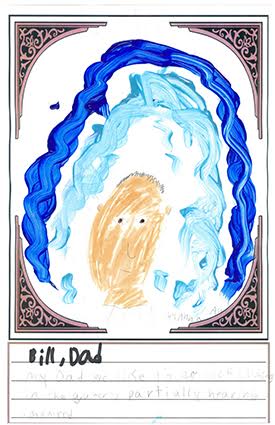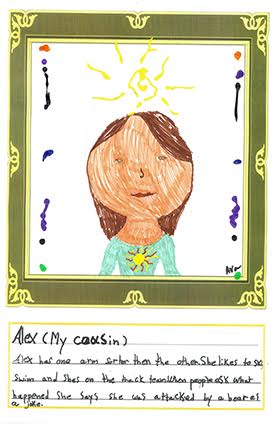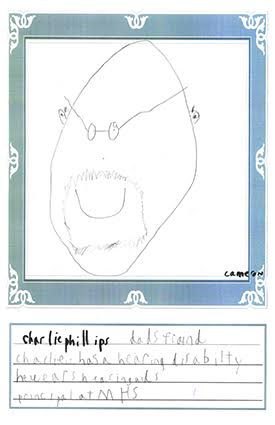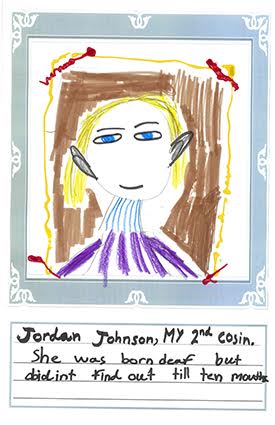
Overview
Disability Awareness Focus: Understanding Disabilities.
Grade Level: K–Elementary, Middle School.
Subject(s): Reading and Language Arts, Math, Science, Social Studies.

Learning Objectives
- Identify and understand various types of disabilities and their impact on individual lives.
- Understand how people with disabilities use equipment, services and accessibility strategies to support independence and ability.
- Identify what inclusion means to individuals and families (at home, in school and in the community).

Standards
Build a strong base of knowledge through content-rich texts.
Read, write and speak grounded in evidence.
Come to understand other perspectives and cultures through reading, listening and collaboration.
Obtain, synthesize and report findings clearly and effectively in response to purpose and task.
Develop and use models.
Materials
• Portrait Worksheet.
• Disability Data Worksheets.
• Inclusion Solutions Worksheet (Unit 2 supplemental material).
• Disability Signs Activity Sheets and Answer Key (Unit 2 supplemental material).
• Sticky dots to vote on future activities (optional).

Directions
Lesson Preparation: Review and select what you want to use from the suggested activities listed below and prepare classroom materials as needed. Lesson Implementation:
Activity 1: Select one of the books listed in the Include! booklist to read aloud to the class as an introduction to thinking about disability as a part of someone’s everyday life. Alternatively, students could choose books to read alone or in small groups. Facilitate a discussion with students about the person who is featured in the book(s):
• What did you learn about the main character’s life?
• What type of disability or difference does the character experience?
• What personal abilities and skills demonstrate?
• What, if any, disability-related equipment, aids or services does the character with a disability use to help with his or her disability?
Activity 2: Ask students to think about people they know or people they’ve heard about who have disabilities. This may include family members, friends, neighbors, television or movie characters, or characters in books. Using the Portrait Worksheet, ask students to interview a family member or friend or ask their family about someone they know who has a disability. Students should complete the Portrait Worksheet at home. Help students create a classroom or hallway display of the portraits and written profiles and be ready to discuss their findings and observations with classmates and any guests. If there is time, have students present their work and share what they learned.
Activity 3: Disability Data Worksheets. Have students work together to collect data from their portraits gallery: How many are women and how many are men? How many share an interest or skill? In terms of disability, how many have mobility-related disabilities; how many have vision disabilities? How many have learning disabilities and how many have more than one disability? When they are finished, have them add their disability data sheets to their portrait exhibit.
Supplemental Activity
Signs for Inclusion: Use the disability signs activity sheets included with Unit 2 to help students explore some of the tools and services that help people with different disabilities participate fully at home, school and in the community. Ask students to find pictures or other examples of equipment, design or services that help children and adult with disabilities do things that would otherwise be hard or impossible.
Inclusion Solutions: Ask students to think about their interviews with people with disabilities and also the stories that they read about people living with disabilities. Ask for examples of problems and solutions presented in either the books or the interviews. Use the Inclusion Solutions Worksheet to discuss other barriers to independence and inclusion that individuals with disabilities face and identify possible solutions.
Helping Younger Students Find Examples of Access: Younger children can use “The Wonderful World of Independent Living” coloring book to explore different kinds of equipment or changes in the home, school, or community environment that make it possible for children and adults with disabilities to join in with everyday activities. As you read the book to them (or as they read it on their own) ask them to find the examples of equipment, tools, or environmental changes that help individuals with different disabilities participate in the community.
The paperback books in the Acorn Early Readers series “Disabilities and Differences” (“We All Learn,” “We All Communicate,” “We All Play,” “We All Move,” “We All Read,” “We Are All Different”) are helpful in starting a broader discussion about disability and inclusion as part of our shared human experience.

Resources
General Resources
For a list of books on disability for different ages, interests, and reading abilities, see the book list on the Include! website or visit your school or community library. When several books about individual experiences with disabilities are read and then discussed together, it helps students understand that disability happens to all kinds of people, at different ages and in all parts of the world.
Supplemental worksheets on disability signs are included for use with this lesson and other lessons in Unit 2.
The Include! website also includes resource links to organizations, films and related websites that can help students learn more about living with disabilities.